Abstract
Vegetable production in Saudi Arabia has developed through efficient land use and improved varieties, despite being subject to constraints, particularly in terms of climatic conditions and water resources. According to data for 2022, cucumbers are the most produced, reaching 205kt. This indicates that Saudi Arabia has placed importance on cucumber production as a crop suitable for warm climates. Compared to other vegetables, the land use area for cucumbers is large and efficient cultivation methods are used. Tomatoes are widely grown in Saudi Arabia, but production volumes vary depending on their use. Tomatoes can be used for a variety of purposes, including eating them raw and processing them (to make ketchup and sauces), and in areas where there is high demand for processed tomatoes, there tends to be specialized production for this purpose. Saudi Arabia is promoting technological innovation to make maximum use of water resources in order to improve the efficiency of agriculture. For example, drip irrigation technology is being introduced and groundwater is being properly managed. Furthermore, the introduction of greenhouse cultivation and high-tech agriculture in vegetable production is progressing, and production volume is expected to continue to increase in the future.
Production (by vegetables)
A notable trend in vegetable production in Saudi Arabia is the production volume of cucumbers. Looking at data from 1961 to 2022, cucumbers recorded their highest production volume in 2009 at 326 kt, but have since been on a downward trend, currently at 62.7% of its peak. Possible factors for this decline are climate change, depletion of groundwater resources, and limitations in agricultural technology. In particular, Saudi Arabia’s water-dependent agriculture sector is facing sustainability challenges, with overall agricultural production affected. On the other hand, technological innovations have been progressing in recent years, with greenhouse cultivation and efficient water use being strengthened. As a result, the production volume of certain vegetables has recovered to a certain extent, but large-scale production of some vegetables, such as cucumbers, has become difficult. Saudi Arabia is also focusing on the production of other vegetables (such as tomatoes and eggplants), and is making progress in improving varieties and diversifying cultivation methods. Overall, vegetable production in Saudi Arabia continues to change at the intersection of environmental constraints and technological advances, and future developments in water resource management and agricultural technology will be key.
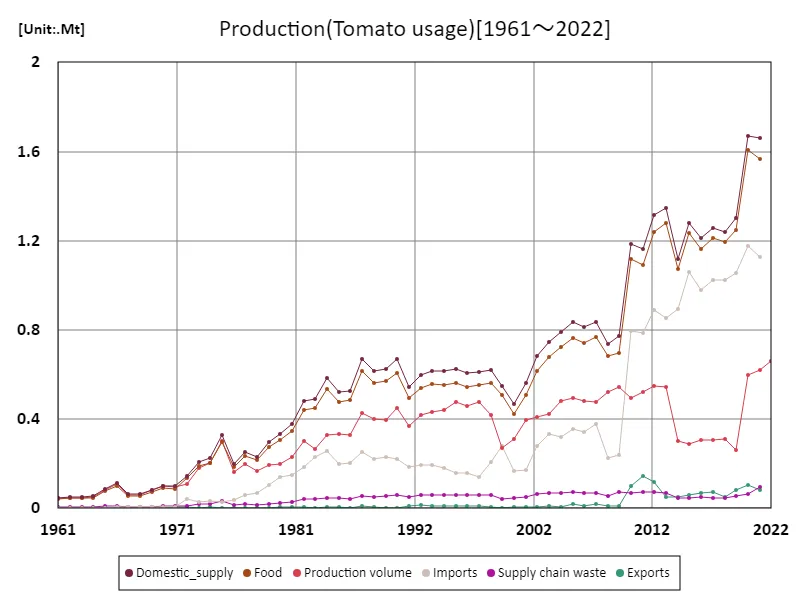

The maximum is 1.67Mt[2020] of Domestic_supply, and the current value is about 99.5%
Yield(by vegetable)
A notable feature of vegetable production in Saudi Arabia is the remarkable increase in cucumber yield. Data for 2022 shows that cucumber yield reached 85.8t/ha, the same level as the peak. This is the result of advances in agricultural technology as well as efficient land use and water resource management. In particular, the spread of greenhouse cultivation and drip irrigation techniques has significantly improved cucumber production efficiency. On the other hand, agriculture in Saudi Arabia is subject to water resource constraints, and the problem of groundwater depletion is becoming more serious. As a result, crops that previously recorded high yields have shown a tendency to decline, but in the case of cucumbers, stable production has been maintained thanks to the introduction of efficient farming techniques. Additionally, the Saudi Arabian government is promoting the introduction of efficient irrigation methods and water-saving technologies to ensure the sustainability of agriculture, which is contributing to improved cucumber productivity. In the future, Saudi Arabia will need to maintain the production of high-yielding crops such as cucumbers while also improving water resource management, soil improvement, and breeding to increase the sustainability of its agriculture.
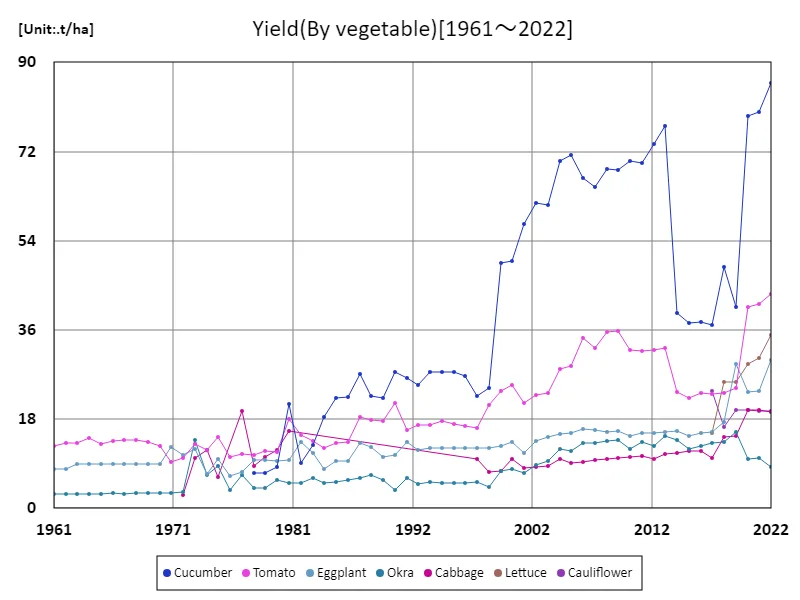

The maximum is the latest one, 85.8t/ha of Cucumber
Land use (by vegetables)
Looking at land use trends in vegetable production in Saudi Arabia, tomatoes occupy the largest amount of land, at 15.2 kha in 2022 data. This indicates that tomatoes are a crop in high demand in the country and vast amounts of land are being dedicated to ensuring production. In particular, Saudi Arabia has a high demand for tomatoes for both raw consumption and processed uses (ketchup and sauces), and the country aims to ensure a stable supply, so the area dedicated to tomato cultivation is large. In addition, the total land use area is 27.2kha, with an average area of 3.89kha, indicating that a variety of crops are cultivated. This reflects Saudi Arabia’s efforts to efficiently produce a wide variety of vegetables on its limited agricultural land. However, due to climatic conditions and water resource constraints, there is a need for advances in agricultural technology. In particular, greenhouse and hydroponic cultivation techniques are being increasingly introduced to improve the efficiency of land use. In the future, improving agricultural productivity will be an important issue for Saudi Arabia, with the aim of optimizing land use. The key to sustainable agriculture is believed to be how to create a highly efficient production system within limited resources.
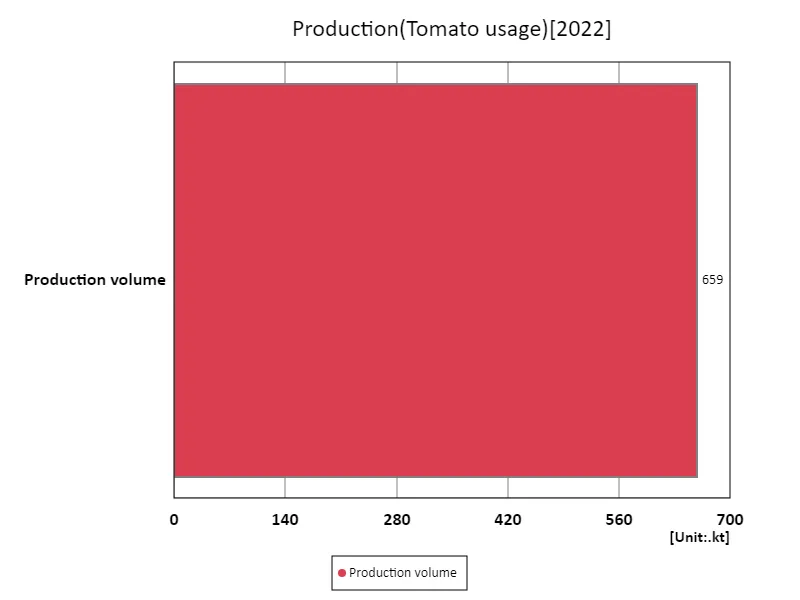

The maximum is 659kt of Production volume, the average is 659kt, and the total is 659kt
Tomato usage
Tomato production in Saudi Arabia constitutes a significant portion of the domestic supply, and based on data going back to 1961, tomato production by use has been growing steadily in response to increasing domestic consumption. Notably, the highest domestic supply of 1.67Mt (million tonnes) indicates that tomato is a major crop in Saudi Arabia’s agriculture. This data reflects the high demand for tomatoes in Japan’s food culture and food processing industry, due to the high demand for tomatoes both for fresh consumption and for processed purposes (ketchup, sauce, canned products, etc.). Up until now, tomato production has been centered on the domestic market, and as domestic consumption has increased, production volume has expanded in order to ensure a stable supply. In particular, demand for tomatoes for processing is also increasing, and processed products such as ketchup and tomato sauce are widely used. In recent years, Saudi Arabia has been facing challenges such as limited water resources and climate change, leading to innovation in agricultural technology and the introduction of greenhouse cultivation and highly efficient irrigation techniques. This has improved tomato production and ensured a stable supply. Demand for tomatoes in the domestic market is expected to remain high in the future, and demand for processing in particular is expected to increase, so the introduction of sustainable agricultural techniques will become even more important.
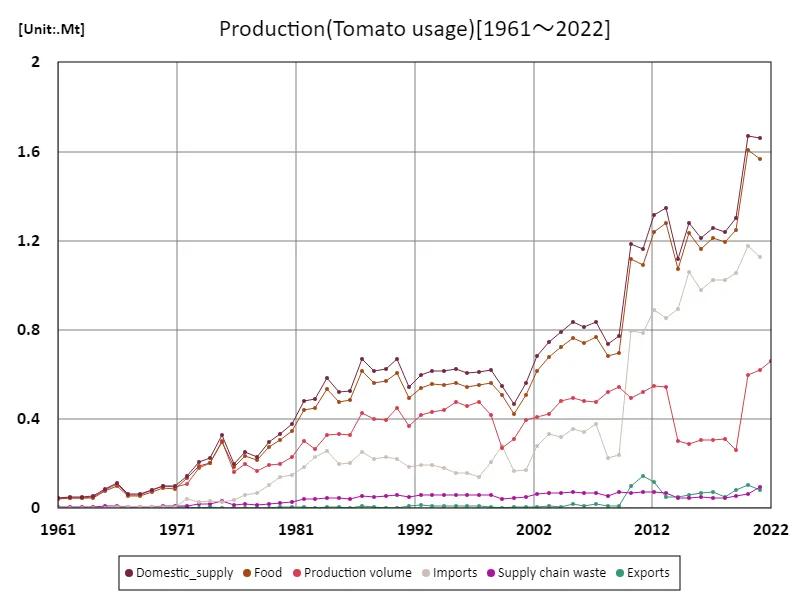

The maximum is 1.67Mt[2020] of Domestic_supply, and the current value is about 99.5%
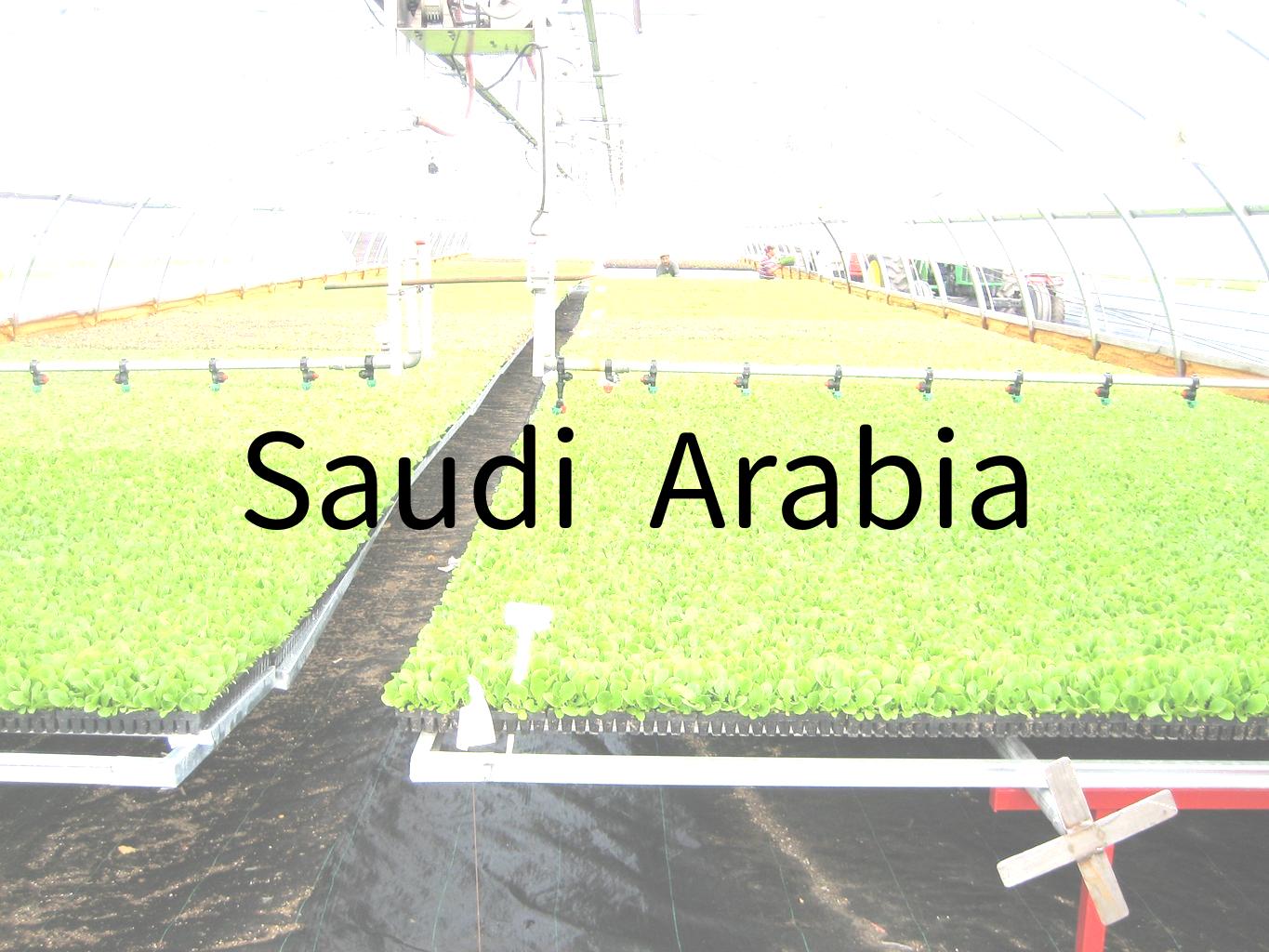


Comments